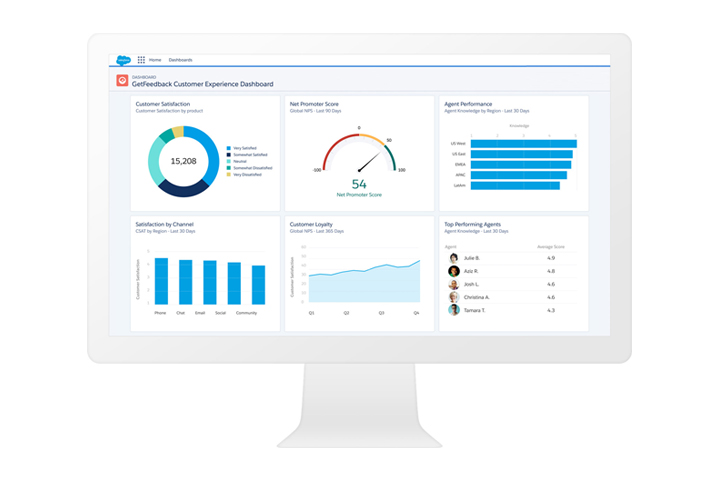At the crux of any enterprise lies the desire to meet customer expectations. But even if you have delivered on all your promises, it is not an affidavit of customer’s happiness or satisfaction, neither does it guarantee returning customers. What should businesses do to ensure customer satisfaction? How to ensure that every customer returns back?
We will answer all these questions and more in this blog, but let’s begin with understanding customer satisfaction from the perspective of a buyer using the example of India’s top consumer goods company Patanjali.
The Patanjali Story

We will let data speak for itself. The below table shows Patanjali’s revenue on a YOY basis.
As evident from the data, Patanjali’s revenue increased by more than 500% within 5 years. Experts cite many reasons for this phenomenal growth, but ‘customer satisfaction’ is one reason that towers everything else.
Customer Satisfaction: The Secret behind Patanjali’s Success
Patanjali is successful because people have unflinching faith in Patanjali’s products. Patanjali was not the first company to launch herbal products in India, there were many companies before Patanjali. But what set Patanjali apart from the rest was the company’s sole focus on customer satisfaction. A vital role in this was played by Patanjali’s use of empathetic words like ‘Swadeshi or indigenous or home-grown,’ that struck all the right chords of the Indian audience.
Can Other Businesses Follow Patanjali’s Footsteps?
Of course, other businesses, too, can follow on Patanjali’s footsteps. But customer satisfaction metrics vary from market to market. What works in the consumer segment may not necessarily work in the automobile sector.
Is There a Magic Wand for Customer satisfaction?
Unfortunately, there is no magic wand for customer satisfaction, but yes, there are tools today that can help you measure customer satisfaction accurately and effectively. One such tool is Salesforce- the world’s best cloud-based CRM.

If your business uses CRM software, chances are that you must have heard of Salesforce, and in case you are thinking of migrating to Salesforce, we would ask you to do it now itself. Salesforce gives businesses the right set of tools to improve multiple facets involving a company like sales, branding, marketing, and advertising, and much more.
How Salesforce Improves Customer Satisfaction?
For long, customer satisfaction had been an abstract concept for enterprises. This was particularly evident in the 19th century, where the business landscape was dominated by a select few. The reason behind this dominance was not better quality products or services, but strong capital and better access to resources. However, the advent of the computer first and the internet later changed the business landscape completely. Today, technology has democratized the business landscape as never before. And salesforce has played a significant role in this.
Salesforce, the world’s most intelligent CR, allows enterprises to gain an in-depth understanding of their existing and potential customers with easy-to-use tools, deploy a connected app, salesforce dashboards, and analytics. Such has been the impact of salesforce on business-customer relations, that companies are retiring long-used homegrown processes. With salesforce by their side companies can:
- Know exactly what customers want.
- Deliver customer needs proactively.
- Adopt marketing strategies that align with customer expectations.
- Understand customers on a personal level.
How to Measure Customer Satisfaction in Salesforce?

Salesforce has been tailored to offer companies a 360-degree view of their customers. With salesforce, it becomes easier to delve into much finer details revolving around customer experience.
Users can easily access log histories to gain valuable insights into customer health and happiness. Further, it is very easy to create CSAT surveys using Salesforce and map the survey results with the dashboard for easy viewing and analysis.
However, feedback surveys have a limited scope as far as measuring overall customer sentiment is concerned. They are useful when salesforce users want feedback on particular features and functionalities.
For a more intricate understanding of customer likes and dislikes, salesforce allows easy tracking and analysis of product reviews and feedback received on social media. Also known as social listening, social media sentiment can be studied using simple tools. Social listening helps measure customer satisfaction in 3 primary ways.
- Companies can use social listening to prioritize customer concerns and address them based on their impact on business value and growth.
- Companies can identify and eliminate aspects of customer service that customers dislike. This is possible by analyzing the correspondence details between customers and service agents.
- Companies can also segregate customer data to determine repeat order frequency, average lifetime value, etc. and other key customer satisfaction indicators. Based on these indicators, they can create custom loyalty programs for most valuable customers.
Simon Sinek, in his book ‘Start with Why’ highlights important factors that set apart brands like Apple from the rest. One of the primary factors that play a crucial role in branding is customer perception. By creating the right perception, you can create a long-term bond between your customers and your products/services. Salesforce has become an important tool to create lasting business-customer relationships. PSRI, a reputed salesforce development company, has helped enterprises of all scale and size to leverage salesforce benefits. Our team of expert salesforce practitioners and business analysts will help you create the right metrics to measure customer satisfaction. Please visit our Salesforce page to read more.









